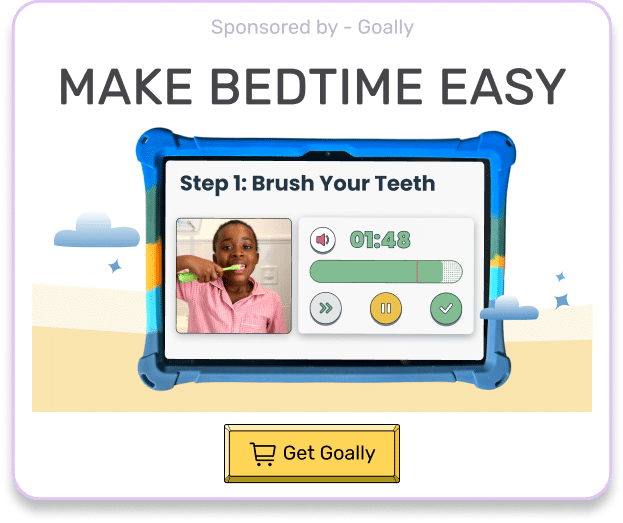I’ve seen firsthand how poor posture can affect a child’s health and confidence. As a pediatric physical therapist, I often work with kids who slouch or hunch over, leading to back pain and decreased self-esteem. Good posture isn’t just about standing up straight; it’s about creating healthy habits that will benefit your child for life. In this guide, I’ll share practical steps to help your kids develop good posture. We’ll cover everything from understanding why posture matters to fun exercises that make standing tall feel natural. Good posture involves keeping your body in alignment, with the spine in a neutral position, whether sitting or standing. Let’s explore how to make good posture a habit for your kids!
Table of Contents
1. Explain the Importance of Good Posture
The first step in teaching kids how to have good posture is helping them understand why it matters. I often start by comparing the body to a tall building. Just as a building needs a strong foundation and straight walls to stand tall, our bodies need proper alignment to function well. Good posture helps prevent back pain, improves breathing, and even boosts confidence.
To make this concept more relatable, we might play a game of “Posture Detective.” I ask kids to observe people around them and spot good and poor posture. We discuss how different postures make them feel. Does the person with slouched shoulders look tired? Does the person standing tall seem more confident? This interactive approach helps kids connect posture with real-life experiences and emotions.
2. Model Good Posture Yourself
Kids learn by example, so one of the most effective ways to teach good posture is to model it yourself. I always remind parents that their kids are watching and mimicking their behavior. Make a conscious effort to sit and stand with good posture throughout the day. When you catch yourself slouching, use it as a teaching moment. Say something like, “Oops, I noticed I was slouching. I’m going to sit up straight to help my back feel better.”
You can also make posture checks a fun family activity. Create a secret “posture signal” that family members can use to remind each other to straighten up. This could be a funny face or a special hand gesture. It’s a playful way to reinforce good habits without nagging or criticism.

Read more: Teaching Kids How to Keep Calm
3. Create an Ergonomic Environment
Good posture is much easier to maintain when the environment supports it. At home, ensure your child’s workspace is set up ergonomically. The chair should allow their feet to rest flat on the floor (or on a footrest), with knees at a 90-degree angle. The desk should be at a height where their elbows can rest comfortably while typing or writing.
Here’s a quick guide to setting up an ergonomic workspace for your child:
| Item | Proper Position | Why It Matters |
|---|---|---|
| Chair Height | Feet flat on floor or footrest | Reduces strain on lower back and improves circulation |
| Desk Height | Elbows at 90-degree angle when typing | Prevents shoulder and neck strain |
| Computer Screen | Top of screen at or slightly below eye level | Reduces neck strain and eye fatigue |
| Backpack | No more than 10-15% of body weight | Prevents back strain and promotes balanced posture |
4. Teach Proper Sitting and Standing Techniques
Now that we’ve set the stage for good posture, it’s time to teach the specifics of how to sit and stand correctly. For sitting, I use the “chair test” technique. Have your child sit all the way back in their chair, then place a hand behind their lower back. There should be a small space there – about the size of their hand. If there’s no space, they’re slouching. If there’s too much space, they’re arching their back.
For standing, I like to use the “wall test.” Have your child stand with their back against a wall, heels about 2-3 inches from the baseboard. Their head, shoulder blades, and buttocks should touch the wall. There should be a small space behind their neck and lower back. This position demonstrates proper alignment. Encourage them to practice this position and then step away from the wall, maintaining the same posture.
5. Incorporate Posture-Strengthening Exercises
Good posture requires strong core and back muscles. Incorporate fun exercises that strengthen these areas into your child’s daily routine. One of my favorites is the “Superman” exercise. Have your child lie face down on the floor with arms extended in front of them. They then lift their arms, legs, and chest off the ground simultaneously, holding for a few seconds before lowering back down. It’s like they’re flying like Superman!
Another effective exercise is the “Tree Pose” from yoga. This pose improves balance and core strength while promoting good posture. Have your child stand on one leg, placing the sole of the other foot on their inner thigh or calf (never on the knee). They should keep their hands at their heart or raised above their head. Encourage them to focus on a point in front of them to maintain balance. Make it fun by pretending they’re trees swaying gently in the wind.
6. Use Visual Cues and Reminders
Kids respond well to visual reminders. Create a “posture chart” with pictures or drawings of good sitting and standing postures. Place these in areas where your child spends a lot of time, like their bedroom or study area. You can also use stickers or fun shapes as “posture spots” on the back of chairs or on the floor where they often stand, reminding them to check their posture.
Another effective tool is the “posture buddy.” This could be a small stuffed animal or a fun character that sits on your child’s desk or shelf. Its job is to watch their posture and remind them to sit or stand tall. You might say something like, “Look, Mr. Posture Bear is watching to make sure you’re sitting up straight!” This adds an element of fun and external motivation to maintaining good posture.
7. Make Posture Practice Fun
The key to helping kids develop any habit is to make it enjoyable. Turn posture practice into a game or challenge. You might have a “posture password” that family members have to demonstrate before entering a certain room. Or create a “posture dance” where specific moves emphasize good alignment. I once worked with a family who had a “posture points” system, where kids could earn points for catching family members (including parents!) with good posture.
You can also incorporate posture practice into everyday activities. For example, during TV time, challenge kids to sit with good posture during commercials. Or play “freeze dance,” where everyone has to freeze in a good posture position when the music stops. The more you can integrate posture awareness into daily life in a fun way, the more likely it is to become a natural habit.
Goally | Apps To Support Child Development
Looking for fun ways to help your child learn life skills? Try Goally! The Goally tablet comes with award-winning learning apps and video classes to help kids develop the skills they need to become independent with FUN & evidence-based practices.

Our apps teach executive function, language, emotional regulation, finger dexterity skills, and more.
As your child develops new skills, you can increase the difficulty level of the tasks in the app to challenge and motivate them even further. This helps your child grow and progress at their own pace, while also keeping them engaged and excited about their development.

Teaching kids how to have good posture is an investment in their long-term health and well-being. Remember, developing good posture is a process, not an overnight change. Be patient and consistent in your efforts. Celebrate small improvements and make it a positive experience. By following these steps and adapting them to your child’s interests and needs, you’re setting them up for a lifetime of better posture, improved health, and increased confidence. Keep it fun, stay consistent, and before you know it, good posture will be second nature for your kids!
Helpful Resources
FAQ’s About How to Teach Kids to Have Good Posture
Why is good posture important for kids?
Good posture helps prevent back pain, improves breathing, and boosts confidence in children.
What are some simple exercises to improve a child's posture?
The "Superman" exercise and yoga's "Tree Pose" are fun, effective ways to strengthen core muscles and improve posture.
How can parents create an ergonomic workspace for their child?
Ensure the chair allows feet to rest flat, knees at 90 degrees, and the desk enables elbows to rest comfortably while working.
What's a fun way to remind kids about maintaining good posture?
Create a "posture buddy" - a stuffed animal that watches over and reminds the child to sit or stand tall.
How can parents model good posture for their children?
Make a conscious effort to sit and stand straight, and use "posture checks" as teachable moments throughout the day.
This post was originally published on 12/01/2023. It was updated on 08/15/2024.
Emily is a seasoned blog writer for Goally, leveraging her extensive background in child psychology and special education to provide valuable insights and resources for parents. Her commitment to understanding and addressing the unique needs of these children, combined with her expertise in educational strategies, makes her a credible and empathetic voice for families.





